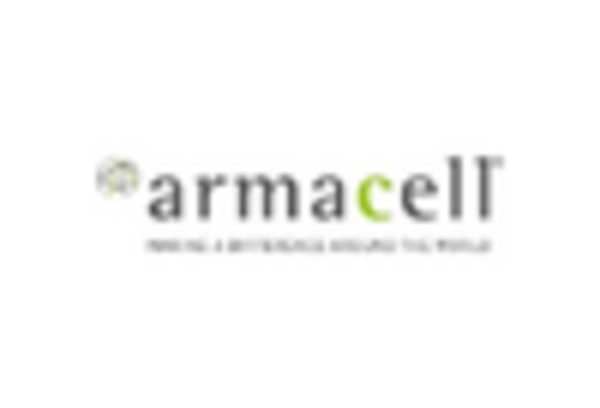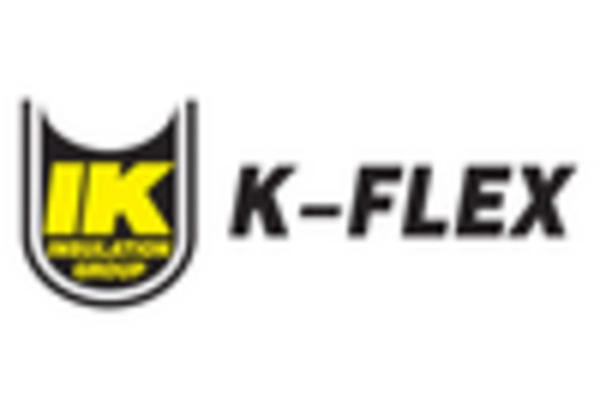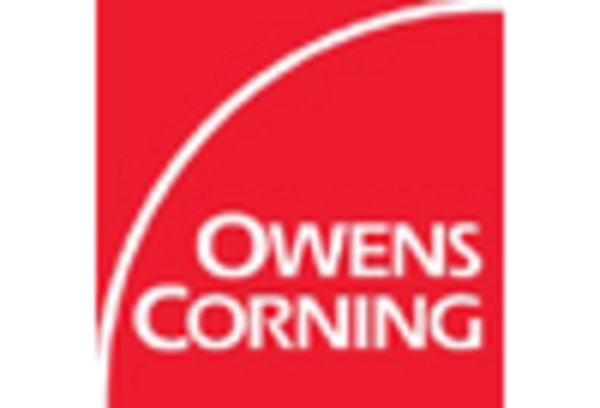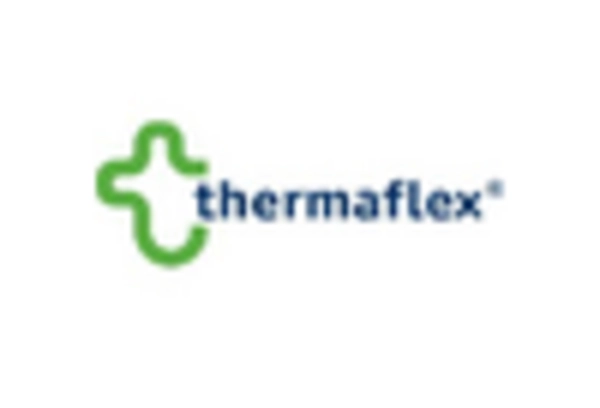Rising Energy Costs
The increasing costs associated with energy consumption are driving the demand for the pipe insulation market. As energy prices continue to rise, industries are seeking ways to reduce their energy expenditures. Insulating pipes effectively minimizes heat loss, thereby enhancing energy efficiency. In the industrial sector, it is estimated that proper insulation can lead to energy savings of up to 30%. This trend is particularly relevant in sectors such as oil and gas, where operational costs are significantly impacted by energy prices. Consequently, the pipe insulation market is likely to experience growth as businesses invest in insulation solutions to mitigate rising energy costs.
Infrastructure Development
The ongoing infrastructure development initiatives in the US are contributing positively to the pipe insulation market. With substantial investments in transportation, water supply, and energy infrastructure, the demand for effective insulation solutions is expected to rise. According to recent data, the US infrastructure spending is projected to reach approximately $1 trillion by 2027. This surge in infrastructure projects necessitates the use of insulated piping systems to ensure energy efficiency and reduce heat loss. As a result, the pipe insulation market is poised for growth, driven by the need for reliable and efficient insulation in new construction and renovation projects.
Regulatory Standards and Compliance
The implementation of stringent regulatory standards regarding energy efficiency and environmental impact is driving the pipe insulation market. Government regulations often mandate the use of insulation in industrial and commercial applications to reduce energy consumption and greenhouse gas emissions. Compliance with these regulations is becoming increasingly critical for businesses, leading to a higher demand for effective insulation solutions. As companies strive to meet these standards, the pipe insulation market is expected to grow, as organizations invest in insulation products that align with regulatory requirements and promote sustainability.
Increased Awareness of Energy Efficiency
There is a growing awareness among consumers and businesses regarding the importance of energy efficiency, which is positively influencing the pipe insulation market. As energy conservation becomes a priority, industries are increasingly adopting insulation solutions to enhance their operational efficiency. Studies indicate that insulated pipes can reduce energy consumption by up to 20%, making them an attractive option for businesses aiming to lower their carbon footprint. This heightened awareness is likely to propel the demand for pipe insulation products, as organizations seek to comply with energy efficiency standards and improve their sustainability practices.
Technological Innovations in Insulation Materials
Technological advancements in insulation materials are significantly impacting the pipe insulation market. Innovations such as aerogel and advanced polymer-based insulations offer superior thermal performance and durability. These materials not only provide better insulation but also contribute to weight reduction, making them ideal for various applications. The introduction of these advanced materials is expected to enhance the performance of insulated piping systems, thereby attracting more customers. As industries continue to seek high-performance solutions, the pipe insulation market is likely to benefit from the adoption of these innovative insulation technologies.

















Leave a Comment